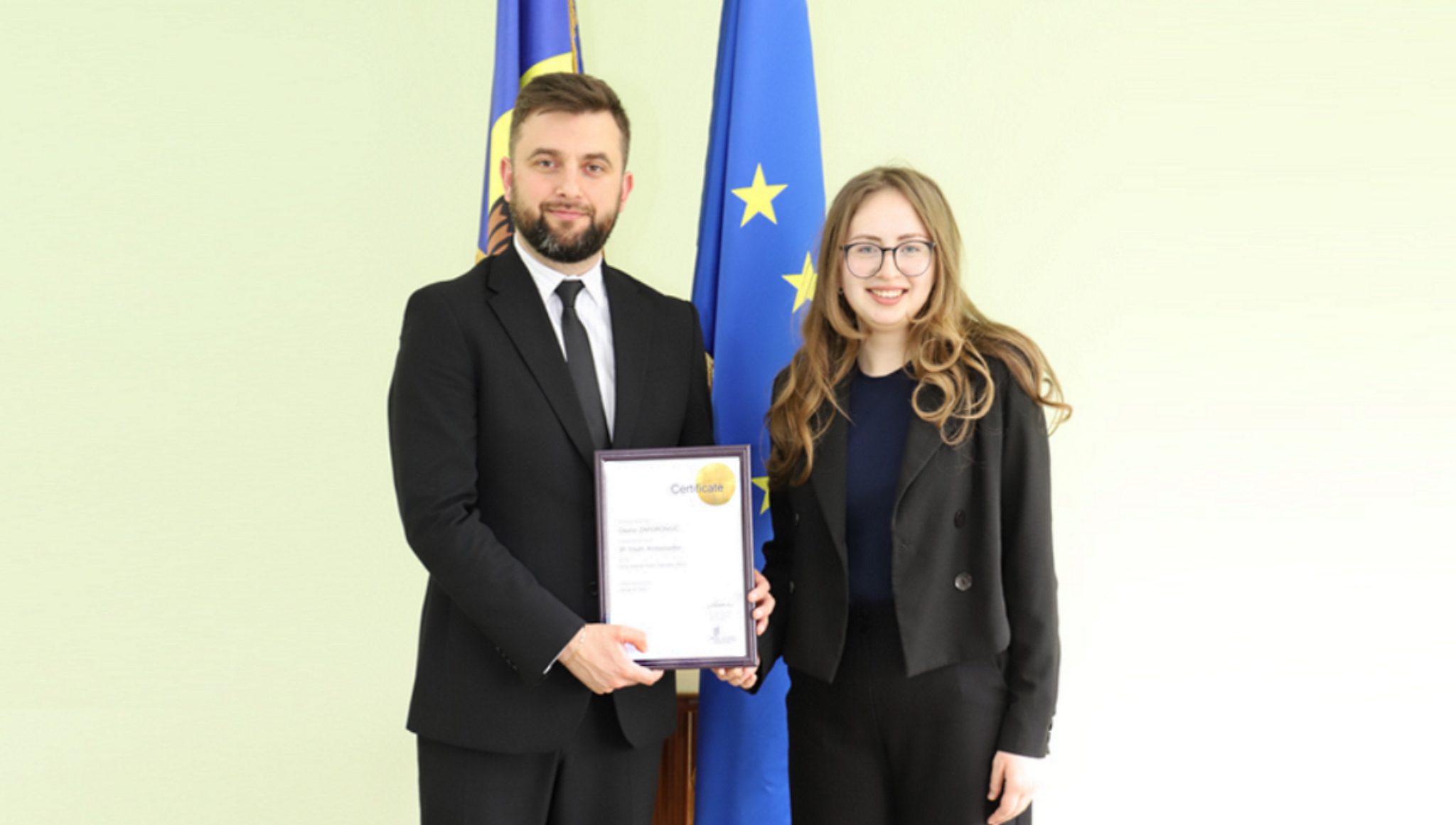Students who are part of the program “Design and polygraphic technologies”, years I, II, IV, Faculty of Textile and Polygraphy, accompanied by the head of the DTP program, associate professor, Dr. Viorica CAZAC, and lect. Lucia ADASCALIȚA, said they were pleased to learn about the techniques of Japanese woodcut presented at the seminar “Discover the landscape in the woodcut Ukiyo-e”, held at the National Museum of Art of Moldova.
And because Ukiyo-e means paintings of the transient world, the landscapes were full of bits and pieces of nature, but also historical elements. Most of them were kept in the homes of Japanese families, arriving in Europe, in the 19th century, mesmerizing the artists of the West, in particular, those of the Impressionist Movement. Today, almost 75 percent of all Ukiyo-e engravings are found in various collections outside Japan, including in the Republic of Moldova. This is precisely why this event aimed to contribute to deepening the public’s knowledge and interest in Japanese culture.
The moderator of the seminar, Rossella MENEGAZZO, Italian professor of art history at the University of Milan, and Japanese photographer Yuki SELI, made an introduction to the works of the main artists of the genre Ukiyo-e, Hokusai, Hirodhige and Yoshitoshi. The two approaches to the landscape, starting with the 19th century, and their gradual transformation under the influence of Western art, reach their peak in the 20th century, in Hasui’s works.
During the 19th century, the prevalent genre is Meisho – “famous places in Japan”, remarkable for its symbolism. However, after the so-called “opening” of Japan to the Western countries, in the second half of the 19th century, the landscape is reflected, conceptually, in a realistic style. In this sense, the works of the late period signed by Hiroshige denote the influence of optical techniques, which led to the introduction of photography in Japan, in the 1850s, with impressive close-ups, and subsequently, visual effects that were used in the first manually colored photographs from the Meiji period. Photographer Yuki SELI, by capturing the landscape, shows the special relationship between the Japanese and nature, and how the composition and the individual perception of the Ukiyo-e genre become an organic part of the Japanese visual culture.
The National Museum of Art of Moldova collaborates fruitfully with the Embassy of Japan in Chișinău, E.S. Japan’s Ambassador to Moldova, Masanobu YOSHII, noting that this seminar is a pre-event for the Ukiyo-e exhibition, which will be held in January. An exhibition by Japanese photographer Yuki SELI will also be opened.
[av_gallery ids=’64223,64224,64225,64226,64227,64228,64229,64230,64231,64232′ style=’big_thumb’ preview_size=’featured_large’ crop_big_preview_thumbnail=’avia-gallery-big-crop-thumb’ thumb_size=’featured_large’ columns=’10’ imagelink=’lightbox’ lazyload=’avia_lazyload’ id=” custom_class=” av_uid=’av-os358d’ admin_preview_bg=”]




